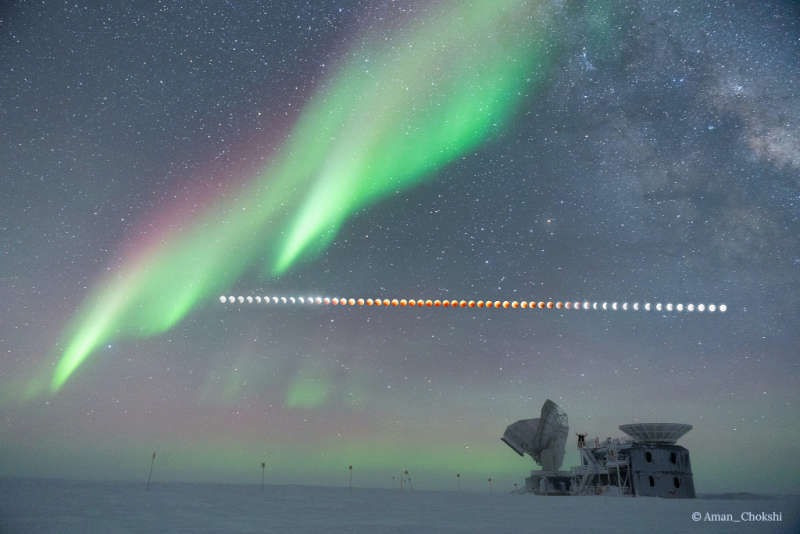
|
Credit & Copyright: Aman Chokshi
Explanation:
Last
May 16 the Moon
slid through Earth's shadow, completely immersed in the planet's
dark umbra
for about 1 hour and 25 minutes during a total lunar eclipse.
In this composited timelapse view,
the partial and total phases
of the eclipse were captured as the Moon tracked above the horizon
from Amundsen-Scott South Pole Station.
There it shared a cold and starry south polar night with a
surging display of the aurora australis
and central Milky Way.
In the foreground are the BICEP (right) and
South Pole telescopes at the southernmost station's Dark Sector Laboratory.
But while polar skies can be spectacular,
you won't want to
go to the South Pole
to view the total lunar eclipse
coming
up on November 8.
Instead, that eclipse can be seen from
locations in Asia, Australia, the Pacific, the Americas and Northern Europe.
It will be your last chance to watch a
total
lunar eclipse until 2025.
|
January February March April May June July August September October November December |
| ||||||||||||||||||||||||||||||||||||||||||||||||
NASA Web Site Statements, Warnings, and Disclaimers
NASA Official: Jay Norris. Specific rights apply.
A service of: LHEA at NASA / GSFC
& Michigan Tech. U.
Based on Astronomy Picture
Of the Day
Publications with keywords: lunar eclipse
Publications with words: lunar eclipse
See also:
